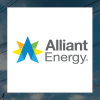To begin, you have to understand there are two kinds of geothermal energy.
Dealing with recyclables

There’s a problem with recycling.
Manufacturers create new packaging all the time. They have specific goals such as making products more attractive and protecting them against world-wide shipping. They change materials, choosing from a wide range, some of which are recyclable, some of which are recyclable in theory and some of which are not recyclable. Code 7 on plastic products is an “everything else” category which is generally held to be non-recyclable.
The consumer doesn’t have much choice when they buy products—all products these days seem to be packaged in plastic. The burden of developing a recycling program then falls on your city, town or rural district. Aluminum cans and paper may actually have value on the open market, but the cost of handling, sorting, and storing recycling outstrips recycling’s market value.
Ten years ago, B.C. implemented a concept, developed in Sweden, called “extended producer responsibility.” Instead of placing the logistics and financial burden on your local city, the responsibility for disposing of these myriad materials is placed on the companies that import them into the province. The restaurants, retailers and manufacturers who bring them in, are responsible for seeing them to an end, most often recycled, destination. These producers, who are called stewards, include Procter & Gamble, Loblaws, and Coca-Cola, among others. There were a total of 1,165 stewards in 2023.
Practically speaking, these companies contribute money to a non-profit, called Recycle BC. From 2014-2023, they contributed $1.02 billion dollars. Recycle BC is often thought of as a government program. But while it responds to government laws, it is a private non-profit, answering to a board of governors.
The size of each producer's contribution is in proportion to the weight of the goods they generate. Recycle BC directs curbside pickup from homes and collection from multifamily dwellings and depots. They also carry out a large amount of advertising, direct and via social media, educating people about the “what” and “how” of recycling.
One of the strengths of extended producer responsibility in B.C. was demonstrated in response to the 2018 shock when China announced “Operation National Sword,” which closed their market to nearly all recyclables. Most China-bound recyclables were collected in a “single stream,” which mixed paper, glass and all types of plastic.
At the Chinese end, these shipments were found contaminated (with items such as food, or more poisonous items such as electronics) and difficult to sort, especially various types and colours of plastic. While some of these shipments were then sent to countries such as Malaysia and India, soon these stopped accepting recyclables as well. It became much more expensive to find a destination for recycling and many North American recycling programs shut down.
In contrast, B.C., under extended producer responsibility, carried out most recycling in B.C. and within North America. In particular, it developed a close relationship with Merlin Plastics, which has locations in Delta and New Westminster. In 2023, 99.6% of plastics were dealt with in B.C,. while 51.9% of paper is recycled in North America (the rest is exported to Asia) and nearly all metals and glass are recycled here in Canada. These relationships helped B.C. weather the storm when China suddenly closed its borders to recycling.
In theory, extended producer responsibility should put pressure on manufacturers and others to use materials that are intrinsically recyclable and therefore less expensive to recycle. That feedback loop may provide positive reinforcement in Europe, where the system is more widespread, but as long as B.C. is the largest EPR region in North America, it is still a small percentage of the market and unlikely to change business as usual.
One Recycle BC improvement introduced in 2023 was combining two confusing categories—plastic bags and overwrap and other flexible plastics into one easier to identify category called flexible plastics.
While plastic bags and overwrap could be recycled, initially other flexible plastics were used for research and development. That research led to a path forward and now flexible plastics are recycled by adding the material to higher quality plastics. You can see a full list of examples of flexible plastics at https://recyclebc.ca/wp-content/uploads/2023/01/Flexible-Plastics_Material-List_January-2023.pdf
Total recovery rate for all products was 79.6% by weight in 2023. Paper had a recovery rate of 88%. The recovery rate for rigid plastics was 56% while flexible plastic, still a new category, was 20%. Metal recovery was 70% and glass was 98%.
From the B.C. government’s Environment and Climate Change Strategy there was an announcement on Jan. 6, 2023, that over the next four years the extended producer responsibility would expand to cover mattresses, electric-vehicle batteries and medical sharps.
The public has a huge role to play in this. We need to know which recyclables go in our blue bins and which have to be delivered to the (recycling) depots. We need to deliver all recyclables clean.
In 2023, Recycle BC handled 209,651 tonnes of material but 12,561 tonnes had to go to the landfill either because they are not recycled or due to contamination.
This article is written by or on behalf of an outsourced columnist and does not necessarily reflect the views of Castanet.










